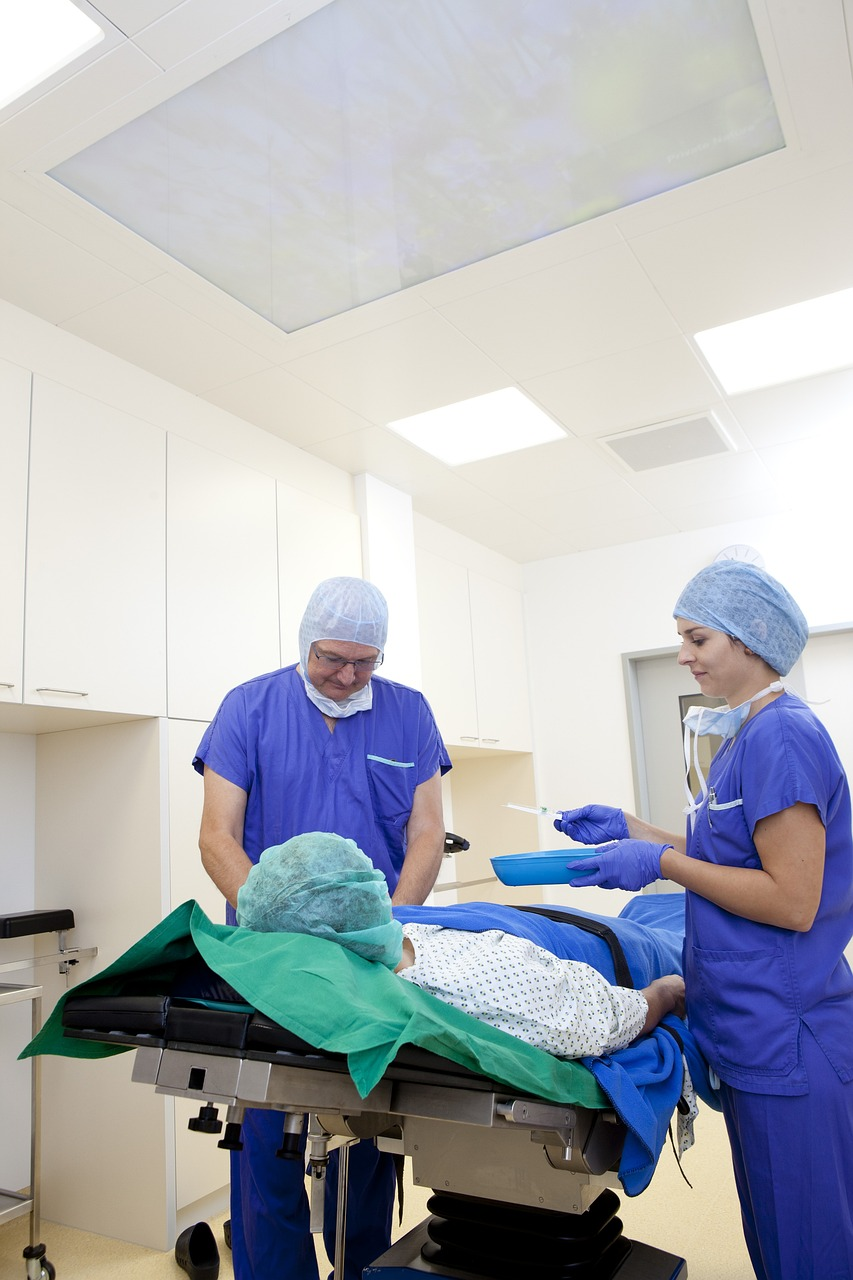Understanding Laryngoscopy: A Critical Diagnostic Tool for Palm Springs Residents
For residents of Palm Springs, understanding medical procedures relevant to respiratory health is crucial due to the region’s dry climate, which can exacerbate throat issues. A laryngoscopy is one such procedure that plays a vital role in diagnosing conditions affecting the larynx, or voice box. This diagnostic testing guide explains what a laryngoscopy is, how it works, and why it might be necessary.
Summary Points
1. Function and Importance of the Larynx
The larynx is located in the neck, atop the windpipe (trachea). It houses the vocal cords, which vibrate to produce sound, making it fundamental for speech. Beyond voice production, the larynx acts as a crucial safeguard for the airway, preventing foreign objects from entering the lungs.
2. Purpose of a Laryngoscopy
A laryngoscopy is performed to examine the larynx for abnormalities such as chronic sore throat, hoarseness, breathing difficulties, swallowing issues, or the sensation of something being stuck in the throat. It’s an essential diagnostic tool for identifying and addressing potential disorders.
3. Procedure Details
During a laryngoscopy, a healthcare provider uses a laryngoscope—a thin tube equipped with a light, lenses, and a video camera—to view the larynx. This instrument can also carry tools for removing tissue samples for biopsy, providing critical information for accurate diagnosis and treatment.
What is a Larynx, and What Does it Do?
The larynx, or voice box, is not only instrumental in voice production but also protects the lungs by blocking the passage of food and other foreign particles. This dual function is essential for both communication and respiratory health.
Significance of Laryngoscopy in Palm Springs
The dry, often dusty conditions in Palm Springs can lead to increased instances of throat irritation and respiratory issues. Understanding when and why a laryngoscopy might be recommended can help residents make informed health decisions:
– Routine Check-ups: For those experiencing persistent throat issues or voice changes, a laryngoscopy can provide clarity and facilitate early intervention.
– Specialist Access: Palm Springs has medical facilities equipped to perform laryngoscopies, ensuring that residents have access to necessary specialist care without significant travel.
Moving Forward
A laryngoscopy is a critical diagnostic tool for anyone experiencing issues with their larynx. For the residents of Palm Springs, understanding this procedure is particularly important due to environmental factors that may impact throat health. By staying informed about procedures like laryngoscopy, individuals can better manage their respiratory health and seek timely medical advice when symptoms arise.
This guide aims to empower Palm Springs residents with comprehensive knowledge about the larynx and the importance of laryngoscopy, enhancing their ability to address potential health issues proactively.
What is a laryngoscopy?
A laryngoscopy is a medical test used to examine the larynx or voice box. During the test, a healthcare provider uses a laryngoscope, a thin tube with a bright light attached, lenses, and a small video camera to look closer at your larynx. They may also use tools attached to the laryngoscope to remove tissue from your larynx if necessary.
Key Takeaways
- The larynx is responsible for producing sound and is located in the neck, at the top of the windpipe or trachea. It contains vocal cords that vibrate to produce sound and also acts as a protective mechanism for the airway.
- A laryngoscopy is a medical procedure used to examine the larynx or voice box in order to diagnose any issues with it, such as chronic sore throat, hoarseness, trouble breathing, difficulty swallowing, and a sensation of an object stuck in the throat.
- A laryngoscopy enables your healthcare provider to examine your larynx and, if necessary, take a biopsy for further testing.
What is a larynx, and what does it do?
The larynx, also known as the voice box, is an organ responsible for producing sound. It is in the neck, at the top of the windpipe or trachea. The larynx contains two bands of tissue called vocal cords or vocal folds.
When we breathe, the vocal cords separate to allow air to pass in and out of the lungs. However, during speech, the vocal cords come together, causing the air from the lungs to pass through a small space. This produces vibrations in the vocal cords, which result in the sound of a person’s voice. The sound then travels up the throat and out of the mouth.
Aside from producing sound, the larynx also plays a crucial role in protecting the lungs from foreign objects, as it blocks foreign matter from entering the lower airway.

When would I need a laryngoscopy?
A laryngoscopy is widely used to diagnose the underlying cause of many symptoms, including:
- Persistent sore throat
- Vocal hoarseness or laryngitis
- Difficulty swallowing
- Bad breath
- Chronic earache
- Coughing up blood
- A lump or growth in the throat
- The sensation of a lump or object stuck in the throat
- Chronic cough
- Trouble breathing
- Weak voice, raspy voice, and other voice problems
- Breathing problems, such as noisy breathing
Types of Laryngoscopy
There are three primary laryngoscopy types: indirect laryngoscopy, fiber-optic (flexible) laryngoscopy, and direct laryngoscopy. Throat specialists called ENTs (ear, nose, and throat specialists) usually perform them outpatient.
Let’s discuss each in depth.

Indirect Laryngoscopy
Indirect laryngoscopy is typically performed in your doctor’s office. For this procedure, you must sit up straight in a high-back chair. Your doctor will spray numbing medicine or local anesthetic on your throat to make you more comfortable. They will then cover your tongue with gauze and hold it to prevent it from blocking their view.
Next, a small mirror will be inserted into your mouth to see the back of the throat to explore the area. Your doctor may ask you to make a particular sound to move your larynx. If your doctor sees a foreign object lodged in your throat, they will remove it.
Direct Fiber-Optic (Flexible) Laryngoscopy
Doctors also often use a direct fiber optic laryngoscopy, often called flexible laryngoscopy, which involves inserting a small telescope on the end of a cable through your nose and into your throat.
The procedure typically takes less than 10 minutes, and your nose will be numbed beforehand with a medication. In some cases, a decongestant may be used to help open your nasal passages. However, it’s common to experience gagging during the procedure. Fun fact: Breathing through your nose during this procedure will calm your gag reflex.
Like indirect laryngoscopy, this procedure is performed in a doctor’s office.
Direct Laryngoscopy
In this type of procedure, your doctor will use a laryngoscope to push down your tongue and lift the epiglottis, which is the flap of cartilage that covers your windpipe. This procedure is done to remove small growths or take samples of tissue for testing. Additionally, a tube can be inserted into the windpipe to aid breathing during an emergency or surgery.
The procedure can take up to 45 minutes, and you will be given general anesthesia, so you will not be awake during the procedure. Your doctor can remove any growths or take a sample of something that requires further examination.
Direct laryngoscopy is typically performed in hospitals, emergencies, or clinics.

How do I prepare for a laryngoscopy?
Before your procedure, arranging transportation to and from the facility is essential. Remember that you cannot drive for a few hours after receiving anesthesia.
It’s important to discuss the details of the procedure with your doctor, including how it will be performed and what preparation is needed. Depending on the type of anesthesia you will receive, your doctor may ask you to avoid food and drink for eight hours before the exam.
Fasting may be unnecessary if you receive mild anesthesia, typically used for in-office procedures.
Make sure to inform your doctor of any medications you’re taking. You may need to stop taking certain medicines, such as aspirin and blood thinners like clopidogrel (Plavix), up to a week before the procedure. However, always consult with your doctor before discontinuing any prescribed medication to ensure it’s safe to do so.
What happens after the laryngoscopy procedure?
After the procedure, medical professionals will monitor you closely to ensure that you do not experience any complications.
Your mouth and throat may remain numb for a few hours. During this time, you will not be allowed to eat or drink. Once the throat is no longer numb, you may experience a sore throat, coughing, or hoarseness for up to a day.
If you are an outpatient, you will most likely be discharged a few hours after the procedure. However, you may need someone to drive you home due to the medication or anesthesia you received. Some hospitals or surgery centers may not allow you to use a cab or a ridesharing service, so check with your healthcare provider. Depending on the circumstances, other resources may be available to help you get home.
Your healthcare provider should provide specific instructions on what you can and cannot do in the hours following the test.
If your healthcare provider takes tissue samples for a biopsy during the procedure, the results will usually be available within a few days. However, some test results may take longer. You will need to follow up with your doctor to obtain your results.
Possible Complications of Laryngoscopy
The exam is relatively safe, and the risk of complications is low. After the test, you may experience minor irritation to the soft tissue in your throat, but overall, it is considered a safe procedure.
If you receive general anesthesia during a direct laryngoscopy, give yourself enough time to recover. The anesthesia will take about two hours to wear off, and avoiding driving during this time is essential. You may also experience nausea or vomiting due to the anesthesia.
If you’re feeling nervous about the test, talk to your doctor. They will provide you with any necessary information and steps to take beforehand.
Home Remedies for Symptom Relief
If you have throat pain or hoarseness after the procedure, there are a few at-home remedies you can try, including:
- Sucking on medicated throat lozenges
- Using over-the-counter throat numbing medication, such as Cepacol.
- Gargling with warm salt water several times a day
- Drinking warm liquids
- Sucking on ice chips
- Taking over-the-counter pain relievers, such as Tylenol
How painful is a laryngoscopy?
Undergoing a direct flexible laryngoscopy can be a strange experience as the doctor will insert the scope up your nose. However, this procedure should not cause any pain. You will still be able to breathe normally throughout the procedure. If the doctor uses a spray anesthetic, it may leave a bitter taste in your mouth.
Are you awake during a laryngoscopy?
Direct laryngoscopy is often considered a surgical procedure performed in an operating room that may take up to 45 minutes. During the procedure, you will be given general anesthesia to ensure you are not awake and feel no pain. Your doctor can use this technique to remove any growths in your throat or take a sample of any suspicious areas that require further examination.
Summary
Your healthcare provider may recommend a laryngoscopy for several reasons. You might have a persistent sore throat, your voice could be hoarse and not getting better, or you may be experiencing multiple symptoms that indicate an issue with your larynx.
Regardless of why you’re having a laryngoscopy, your provider will explain the entire process to you. If there’s anything you don’t understand, don’t hesitate to ask your provider. They’ll be happy to answer your questions and help put you at ease about the test.
Dr. Matthew Olesiak, MD, is the Chief Medical Director at SANESolution, a renowned wellness technology company dedicated to providing evidence-based solutions for optimal living. Dr. Olesiak earned his medical degree from the prestigious Jagiellonian University Medical College in Kraków, Poland, where he developed a strong foundation in medicine.



